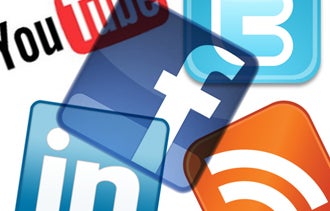Social media provides a platform to connect with other
people all over the world. It allows you the opportunity to share interests
with others, and gives you the ability to find things you have in common with
others. It’s a new form of media with a completely different approach than
traditional media. However, what makes this new media stand out most is its
ability to allow for influence. People who care about certain topics are those
people who you are most likely to find posting about a brand or subject that
revolves around that topic through various social media. In turn, these people
influence the broader group’s thoughts and opinions on said subject.
| Joe Fernandez, Klout CEO Image via google images |
Klout is one tool marketers can use to measure social media
influence. Who are the influencers, what are they saying and when they talk does
a following take any action? Joe
Fernandez, Klout CEO, epitomized this idea of market influence, “Everybody
who creates online content has influence, and with Klout I want to understand who
they influence and what they’re influential about. It’s not about the A list
anymore. It’s about every person” (Schaefer, 2012, p.103). By
studying and understand social media measuring programs like Klout, we can
begin to understand online influence and the benefits that can be seen in
business.
Shripal Shah, former senior vice president at Catalyst PublicRelations, has extensive experience in marketing Klout. Through these marketing
campaigns, he has identified 5 key business benefits that come with social
influence marketing:
Authentic
Advocacy. Word of mouth can be a powerful marketing tool. This applies to
online marketing through social media as well. When people who have influence
online, start posting about your products “in the context of their own lives,
that’s a powerful connection” (Schaefer, 2012, p.136). Arguably as powerful as
a recommendation from a close friend or family member.
 |
| Image via google images |
Cost
Effective Impressions. Impressions online translate into dollars. These
impressions can start out as a tweet that turns into a Facebook post, which is
share via YouTube, and winds up on a blog that is shared by other influential
bloggers. Social media activity can go viral allowing you to magnify the number
of impressions intended by a simple blog post or tweet. And when influential
individuals are the ones talking, brands have “found a new way to use social
media to reach folks and cut through the clutter” (Schaefer, 2012, p.136).
Fresh
Marketing Channel. Social media provides a new marketing channel to reach
potential buyers that may be missed through traditional media.
Consumer Feedback
Loop. Once the conversation is sparked by influencers, the conversation
continues to grow organically. By following the conversation, companies can
begin to understand who are the people most likely to talk about their brands,
what is their demographic makeup and what other important aspects of their
lives exist? This can ultimately aid in creating a new target or identifying
who a target should be.
Brand
Buffer. Shah states, “Most consumers don’t want the brands contacting them
directly on Twitter or Facebook” (Schaefer, 2012, p.137). Klout puts something
between the consumer and the brand almost making the contact friendlier from
the consumers’ perspective.
After reading this discussion and the week’s assignments,
please respond to the following:
- Give an example of a company, brand or person that you think has a strong Klout score. In your opinion, why is the Klout score so strong? Provide examples to back up your point of view.
- What type of impact do you feel social media influence has had on this brand from a business perspective?
- Taking it a step further, consider going online and visiting Klout.com. I did this and found that my Klout score was 16.01. I personally don’t think I have much influence online. When I look at my friends/followers compared to some of my peers, my network isn’t as big as I would like. So I’m not surprised that my Klout score is low. But I will be looking at ways to improve my score over the next few months!
- What is your Klout score? How accurate do you think your Klout score is?
Good luck - looking forward to reading your replies!
Allie
References
Schaefer, M. (2012). Return on influence. New
York: McGraw-Hill.



